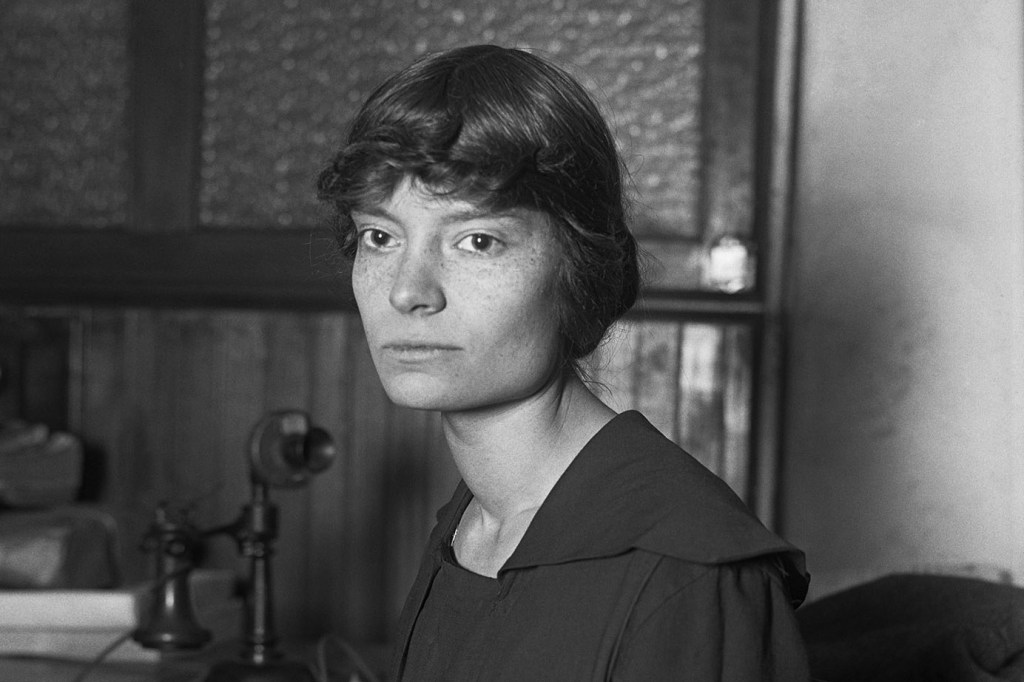Servant of God Dorothy Day is having a real cultural moment, as even secular publications like The New Yorker and The New York Times are writing about her fascinating life.
Meanwhile, the good work she began with the Catholic Worker Movement continues to grow and help countless people in Catholic Worker houses around the world.

Day wrote extensively during her life, including several books, and she founded the Catholic Worker newspaper. Among her books is a biography of St. Thérèse of Lisieux, which I’ve been reading with my book club.
You would think, given the book, that Day was a big fan of St. Thérèse, and indeed she was. But it didn’t start out that way. Quite the opposite, in fact!
Day shared a funny story in the preface about how she didn’t like St. Thérèse’s writings at all when she first encountered them. Her confessor recommended she read St. Thérèse’s famous The Story of a Soul shortly after her conversion.
Day recalled,
One day Father Zachary said to me, “Here is a book that will do you good” … The book he now handed me was The Little White Flower, the Story of a Soul, an unbound book which had a tan cover with a not too attractive picture of a young nun with a sweet insipid face, holding a crucifix and a huge bouquet of roses … She was very young and her writing seemed to me like that of a school girl. I wasn’t looking for anything so simple and felt slightly aggrieved at Father Zachary. Men, and priests too, were very insulting to women, I thought, handing out what they felt suited their intelligence; in other words, pious pap.
I almost laughed out loud at that description. My goodness, Day did not mince words! TheStory of a Soul is considered a beloved spiritual classic, but Day certainly did not see it that way at first. She went on,
I dutifully read TheStory of a Soul and am ashamed to confess that I found it colorless, monotonous, too small in fact for my notice. What kind of saint was this who felt that she had to practice heroic charity in eating what was put in front of her, in taking medicine, enduring cold and heat, restraint, enduring the society of mediocre souls, in following the strict regime of the convent of Carmelite nuns which she had joined at the age of fifteen?
Day had read of saints “stretched on the rack, burnt by flames, starving themselves in the desert, and so on.” Meanwhile, here was St. Thérèse writing about the “mortification” in a splash of dirty water from the nun doing laundry beside her!
The contrast seemed ridiculous to Day. “Joan of Arc leading an army fitted more into my concept of a saint,” she wrote.
She dreamed of enormous acts of heroic sacrifice and changing the world on a vast and impressive scale. St. Thérèse’s “little way” seemed silly and childish to her at the time.
How did she come to love St. Thérèse?
So what changed? Over time, as Day continued the daily grind of her work serving the poor, she began to realize just how vitally important St. Thérèse’s “little way” really was.
These small moments of daily love and sacrifice are where the greatest change in the world really happens.
Most of us won’t lead an army into battle, but we will face countless situations when we can react in anger or bite our tongues. Every day, we have countless opportunities to choose impatience or kindness. All these little acts of love add up to something more powerful than we can even see on earth.
This realization of the power of the “little way” changed Day’s whole perspective. She came to truly love St. Thérèse’s spirituality and writings, so much so that she wrote a book to introduce more readers to her.
Day explained why she wrote yet another biography of St. Thérèse:
I wrote to overcome the sense of futility in Catholics, men, women, and youths, married and single, who feel hopeless and useless, less than the dust, ineffectual, wasted, powerless. On the one hand Thérèse was “the little grain of sand” and on the other “her name was written in heaven”; she was beloved by her heavenly Father, she was the bride of Christ, she was little less than the angels. And so are we all.
In this time when the evil in the world can seem all-consuming and suffocating, there is so much to learn from St. Thérèse’s little way.
“In these days of fear and trembling of what man has wrought on earth in destructiveness and hate,” Day wrote, “Thérèse is the saint we need.”



